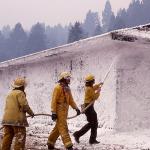Toxicology, the study of poisons, is often thought of as a new discipline. It’s not. It has been around as long as people have been trying out different types of food, and using the occasional poisonous plant, or animal, to dispatch a rival.
toxicology
Chemical phobia is a prevalent theme in today’s social media, and chemicals often written up in mainstream news outlets in negative terms. But have you ever stopped to think about the sources of this information? How many of the source
Alliance for Risk Assessment (ARA) Presents: Beyond Science and Decisions: from Problem Formulation to Comprehensive Risk Assessment
By Dr. Michael Dourson and Dr. Bernard Gadagbui
By Michael L. Dourson, Bernard Gadagbui, and Patricia M. McGinnis
By Dr. Jenifer Heath
Perfluorooctanoic acid (PFOA) is a chemical commonly found in household products. Its purpose is to resist stains, grease, and other assaults.
It's often helpful for journalists who do not have specialized knowledge of complex scientific topics to write about them anyway, because if they can understand them and figure out how to communicate them, they can perform a tremendous public serv









